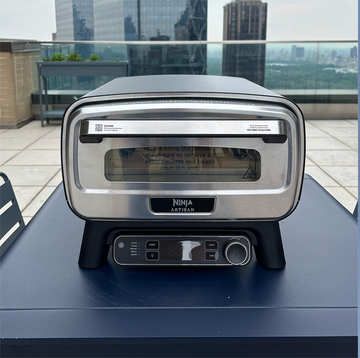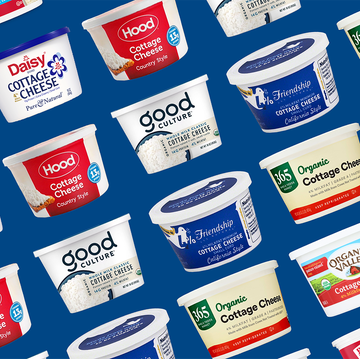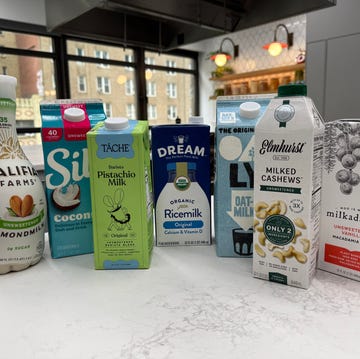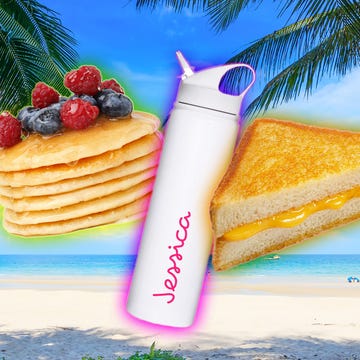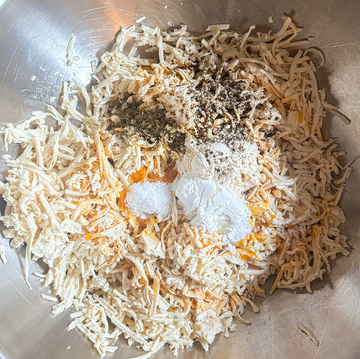Freezing food is an easy way to prolong the life of a loaf of bread, preserve meals from a massive batch of bolognese, and eat freshly-picked blueberries year-round. According to the USDA, food continuously stored at zero degrees Fahrenheit will always be safe to eat—it's just the quality that may suffer. So while you technically can freeze anything, it doesn't mean that you should.
According to Shawn Matijevich, lead chef-instructor of Online Culinary Arts & Food Operations at the Institute of Culinary Education, the water inside food expands as it freezes, breaking down its cells. When the food thaws, moisture leaks from the damaged cells and changes its texture. But some foods fare better than others in these icy conditions.
So, what foods should you avoid putting in the freezer? And what foods can be frozen but need special preparation to ensure they maintain their quality? We consulted the experts to find out.
Foods You Should Never Freeze
Most foods can be frozen, but might not be the best candidates given potential changes to their texture and flavor. "It’s a great way to preserve food, but there can be trade-offs depending on the product," Matijevich says.
Raw Greens & Herbs
Fresh greens like spinach and kale, and tender herbs like parsley, cilantro, basil, mint, and dill shouldn’t be tossed into the icebox willy-nilly. "Once those cell walls are damaged, the thawed greens are limp and oxidize almost immediately," Matijevich says.
To properly freeze greens or herbs, blanch them first: For example, dunk spinach or kale in boiling water and quickly transfer it to an ice bath to cool. "Once blanched, enzymes that would make tender greens and herbs deteriorate are deactivated. So, go ahead and blanch, then squeeze dry, and freeze in batches on a sheet tray," says Delish Senior Food Director Robert Seixas. Once frozen, you can transfer the greens to an air-tight bag for easy storage.
You can also freeze fresh herbs that are NOT blanched if you cover them in oil, like olive oil. "Just chop the herbs (or blitz them in a food processor). Next, portion the herbs into an ice cube tray, cover with oil, and freeze," Seixas says.
Produce With High Water Content
Think tomatoes, cucumbers, and watermelon. While watery fruits and veggies can be frozen, they'll change texture and become mushy after they thaw. They won’t taste good on their own, but you can use them in applications where their original texture does not matter, such as tomato sauce or fruit smoothies.
Whole Eggs
According to the USDA, eggs in the shell should not be frozen as the yolk will become "thick and syrupy," and unpleasant to eat.
Soft Cheeses
If you've read our guide on how to freeze cheese, you know it can be done. But Katie Sautner, New Product Development Manager of Castello Cheese, previously told us that soft cheeses with higher moisture content, like ricotta and brie, risk separation and textural changes. Hard cheeses like Parmesan and Gouda are safer bets.
Some Dairy Products
While Matijevich says he'll freeze dairy if he knows he won't use it before its expiration date, other experts advise against it. According to North Dakota State's Food Freezing Guide, sour cream, mayonnaise, and cottage cheese can become watery and separate if they're frozen solo. "Products such as half and half and milk can be frozen," Seixas says. "There will be a separation of fat and water; just thaw them in the fridge and whisk. Or add to a container and shake."
Fried Food
Fried food is best enjoyed straight out of the fryer, so it's not freezer-friendly. When you try to reheat it, it probably won't return to its original crispiness. Gobble up those French fries while they're hot!
Tips For Freezing Food
"You have to understand how to freeze [food] so you aren't sacrificing too much quality," Matijevich says. To maintain quality, he recommends vacuum sealing or removing as much air as possible from freezer bags and sealing them tightly; this prevents dehydration and freezer burn. He also says to avoid freezing things in "one large clump" and to spread items out before freezing, so you're not left with an impossible-to-thaw ice block.


